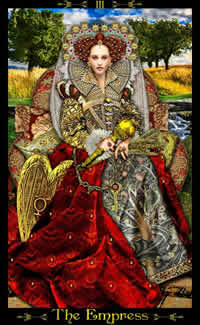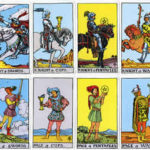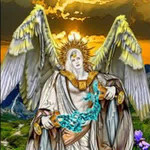The Origins of Tarot Cards: From Game to Divination
The tarot deck is now widely recognized as a powerful tool for spiritual insight, intuitive development, and personal reflection. But tarot’s origins are often misunderstood or steeped in myth. Were they created by ancient Egyptian mystics? Designed by gypsies? Conceived as portals to divine knowledge? While romantic, these ideas only partially reflect tarot’s rich and layered history. The true origins of tarot cards are a fascinating blend of history, art, mysticism, and evolving cultural beliefs.
In this post, we’ll explore the historical beginnings of tarot, how it evolved from a card game to a mystical tool, the influence of the occult, and the modern interpretations that continue to shape the tarot today.
1. Early Playing Cards and the Birth of Tarot
Origins in the Islamic World
Before the emergence of tarot as we know it, playing cards themselves had already traveled across continents. Playing cards originated in the Islamic world, likely in Mamluk Egypt, around the 14th century. The Mamluk deck featured four suits—cups, swords, coins, and polo sticks—and included court cards. These suits would later heavily influence the European card systems, including tarot.
As trade routes expanded, these cards spread into Europe. By the late 14th century, card games were widespread across Italy, Spain, and France. The first documented use of playing cards in Europe appeared in Italy and Catalonia in the 1370s and 1380s.
Tarot’s First Appearance: The 15th Century
The earliest known tarot decks appeared in the courts of northern Italy during the early 15th century. These were not originally designed for divination but rather for a game known as “Trionfi” or “Tarocchi.” One of the oldest surviving tarot decks is the Visconti-Sforza deck, commissioned around 1440 for the Duke of Milan. Lavishly illustrated and hand-painted, this deck was a luxury item for the elite.
The tarot decks from this period typically had 78 cards, divided into:
56 Minor Arcana: Four suits (Cups, Swords, Coins, Wands) with numbered cards from Ace to Ten, and four court cards (Page, Knight, Queen, King).
22 Major Arcana: Also known as “trump” cards or “trionfi,” including figures like The Fool, The Magician, The Lovers, and Death.
At this stage, tarot was primarily used for recreation and courtly entertainment. The spiritual or divinatory aspect had not yet emerged.
2. Tarot and the Occult: The Mystical Transformation
Enlightenment Meets Esotericism
Tarot’s transformation into a tool for divination began in the 18th century in France, as a renewed interest in the esoteric sciences swept across Europe. Enlightenment thinkers and mystics alike became fascinated with secret knowledge, Hermeticism, alchemy, astrology, and Kabbalah.
In 1781, Antoine Court de Gébelin, a French clergyman and Freemason, published an influential essay claiming that the tarot was derived from the ancient Egyptian “Book of Thoth”—a lost repository of magical knowledge. Though there is no historical evidence for this connection, the idea captured the imagination of the occult community.
Court de Gébelin’s writings were based more on speculation than scholarly research, but his theories laid the foundation for the mystical interpretation of the tarot that persists to this day.
Etteilla: The First Professional Tarot Reader
Soon after Court de Gébelin’s writings, a French occultist named Jean-Baptiste Alliette, using the pseudonym Etteilla (his surname reversed), began developing systems for using tarot for divination. Etteilla:
Published the first guidebook for tarot card interpretation.
Designed and published one of the first tarot decks specifically for fortune-telling.
Linked tarot symbolism with astrology, the four elements, and Hermetic philosophy.
Etteilla’s deck and teachings were crucial in establishing tarot as a divinatory tool, moving it firmly into the realm of mysticism and esotericism.
3. The Golden Dawn and the Modern Tarot Revival
Occult Brotherhoods and Tarot Symbolism
In the late 19th century, the Hermetic Order of the Golden Dawn, an influential secret society in Britain, brought new life to tarot by incorporating it into its ceremonial magic practices. The Golden Dawn viewed the tarot as a key to unlocking spiritual insight, connecting the 22 Major Arcana to:
The 22 letters of the Hebrew alphabet.
Paths on the Kabbalistic Tree of Life.
Astrological signs and planetary forces.
Members of the Golden Dawn, including famous figures like Arthur Edward Waite, Aleister Crowley, and Dion Fortune, developed and expanded the symbolic depth of the tarot, weaving it into their teachings on spiritual evolution and occult wisdom.
Anything associated with the Golden Dawn should be viewed skeptically. The members of the Golden Dawn were dark occultists. Occult means hidden. A dark occultist uses lesser known spiritual knowledge to gain power over others. The Golden Dawn helped to bring in the area of New Age Spirituality, which can derail a person’s spiritual development and relationship with the divine.
The Rider-Waite-Smith Deck (1909)
Perhaps the most iconic and influential tarot deck in the modern world is the Rider-Waite-Smith (RWS) deck, first published in 1909. It was:
Conceived by Arthur Edward Waite, a Golden Dawn member.
Illustrated by Pamela Colman Smith, a talented artist and fellow initiate.
Published by the Rider Company, hence the name.
The RWS deck was revolutionary because:
It illustrated all 78 cards, including the Minor Arcana, with rich, symbolic scenes.
It was accessible to a broader audience beyond occult circles.
It came with a companion guidebook explaining the meanings of each card.
The Rider-Waite-Smith deck became the blueprint for most modern tarot decks and remains the most popular and studied to this day.
4. Alternative Traditions and Tarot Variants
While the RWS deck dominates the tarot landscape, other influential systems emerged in the 20th century, each offering unique perspectives:
The Thoth Tarot (1944)
Created by Aleister Crowley and illustrated by Lady Frieda Harris, the Thoth Tarot is deeply rooted in Crowley’s own occult system called Thelema. It incorporates:
Qabalah (a form of Jewish mysticism).
Alchemical symbolism.
Astrology.
Egyptian deities and esoteric numerology.
The Thoth Tarot is more abstract and mystical than the Rider-Waite-Smith deck, and often appeals to advanced practitioners and scholars of the occult.
The Marseille Tarot
The Tarot de Marseille is a traditional tarot deck design that dates back to the 16th and 17th centuries in France. It is known for:
Simplistic, woodcut-style art.
Non-illustrated Minor Arcana (the number cards look like regular playing cards).
Historical significance as one of the earliest standardized tarot decks in Europe.
Many modern European readers still favor the Marseille deck for its classical structure and interpretive freedom.
5. Tarot in the Modern World
Psychological and Archetypal Interpretations
In the 20th century, thinkers like Carl Jung helped reframe the tarot not just as a tool for divination, but as a mirror of the human psyche. Jung believed that tarot imagery represented universal archetypes—symbols of the subconscious mind. This perspective opened the door for:
Therapeutic and psychological uses of tarot.
Self-discovery and inner work through symbolism.
Less predictive and more reflective styles of reading.
Tarot in Popular Culture and Spirituality
Today, tarot enjoys unprecedented popularity. It appears in movies, books, spiritual workshops, and Instagram feeds. The modern tarot reader may be:
A spiritual healer using tarot for energy alignment.
A psychotherapist using it to provoke emotional insights.
A hobbyist using daily card pulls for self-guidance.
A professional intuitive offering readings for clients worldwide.
New tarot decks are created every year, spanning a range of themes—from nature and animals to pop culture, mythology, and social justice. Tarot is no longer confined to the occult or esoteric—it has become a global tool for empowerment, creativity, and consciousness.
6. Common Myths About Tarot Origins
Let’s debunk a few enduring myths:
Myth: Tarot originated in Ancient Egypt.
Truth: There’s no evidence that tarot existed before the 14th century. The idea of Egyptian origins was invented by 18th-century occultists.Myth: Tarot was created for fortune-telling.
Truth: Tarot started as a card game. Its use in divination began centuries later.Myth: Tarot is inherently dangerous or evil.
Truth: Tarot is a tool. Like any symbol system (language, dreams, art), its value lies in how it’s used. Most modern practitioners use it for insight, healing, and reflection—not for dark magic or curses.
Conclusion: The Living Legacy of Tarot
The tarot has undergone a remarkable journey—from medieval card tables to mystical temples, from salon games to psychological explorations, from obscure cults to mainstream consciousness. Its staying power lies in its adaptability and symbolic richness.
The deck’s origins may be rooted in art and play, but its spiritual power has been shaped by centuries of thinkers, mystics, seekers, and creatives. Today’s tarot reader is part of a long and colorful lineage—one that continues to grow, evolve, and inspire.
Whether you see the tarot as a sacred mirror, a storytelling tool, or a playful way to connect with your inner world, its rich and mysterious origins remind us that wisdom often emerges from the unexpected.
See next blog post Tarot Cards Overview.



